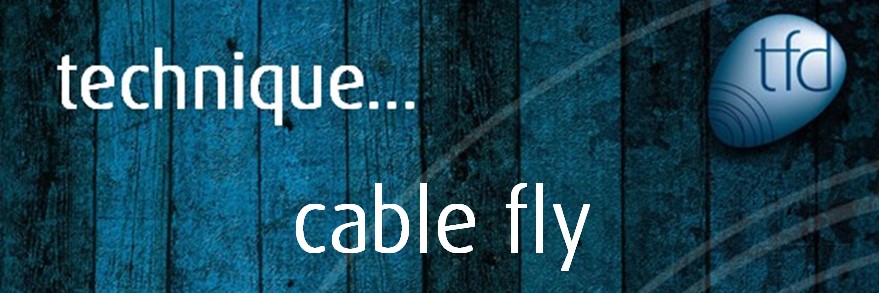The cable chest fly is an isolation movement aimed at targeting the chest. It is a great alternative to a standard dumbbell fly due to its increased tension at the top of the movement, adding more activation and squeeze onto the chest.
The cable fly also uses secondary muscles such as the anterior deltoid and triceps to help steady the weight and keep it under control, it also requires a lot of core stability. It is best used as an accessory exercise for building chest muscle mass.
Due to constant tension, this exercise is great for stretching the chest all the way back and getting a big squeeze at the top, you should aim to do this after a compound movement, so the chest is slightly fatigued. You also don’t need to do cable flies at a heavy weight, you should focus more on the movement and muscle activation rather than how heavy you can lift for best results.
Performing a cable fly –
To perform a standard cable fly, you need to add a small D grip to the top of the cable crossover, take one in each hand and step out whilst pressing the cable forward like a press to get into position. Stand upright, with one foot in front of the other for stability, and your shoulder blades pinned back. Keeping a slight bend in the elbows let the cables back in a controlled manner until you feel your chest stretch back and your pecs open, then bring handles back round at chest height like you’re hugging a tree and squeeze chest at top of the movement, slowly release arms back to stretched and open pec position and repeat for desired number of reps.
Don’t squeeze handles too hard as this can involve biceps and forearms, which will tire before the chest and affect results and muscle gain. Avoid banging the handles together at the top of the movement as this takes tension off the chest. Always keep a slight bend in the elbows and never up the weight to the point you have shoulder pains, as this means your shoulder is taking over the movement, decreasing chest activation. Maintaining core activation to avoid lower back arching is also extremely important.
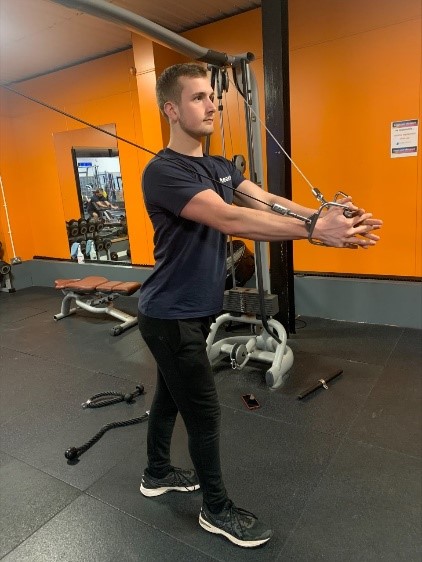
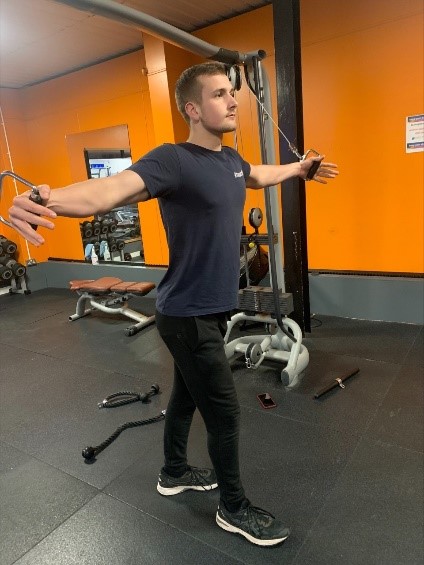
Exercise variations –
Decline cable fly – (lower chest)
The same set up as a standard cable fly, putting D-grips on the top of the cable cross-over, grab grips and press out, then let chest stretch back and open. Now, rotate palms so they’re facing upwards. Avoid leaning forward. The handles should finish low at the top of the movement.
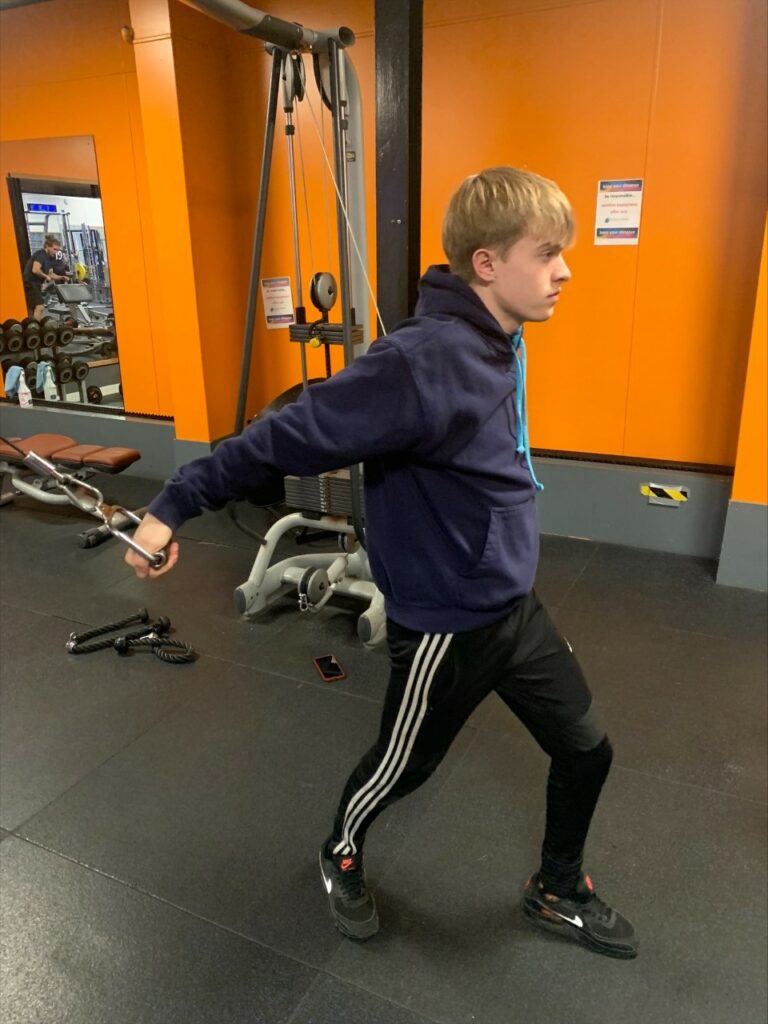
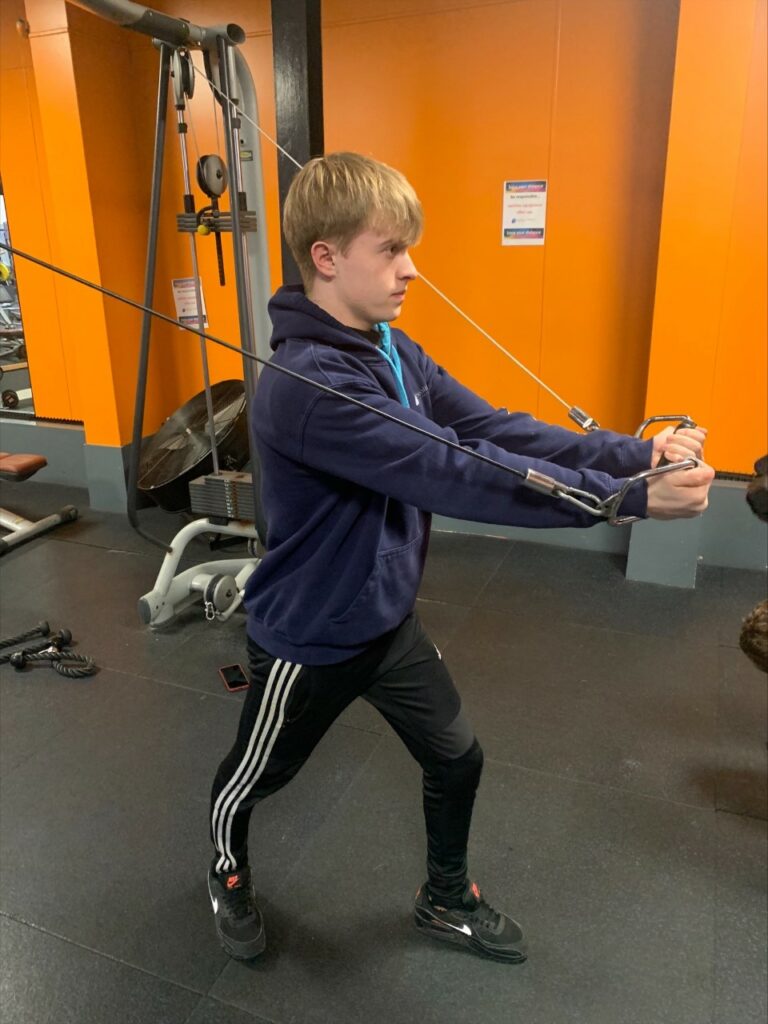
Low cable fly – (upper chest)
Setting the D-grips to the bottom sides of the cable cross-over, grab a handle one at a time and take a step out to add tension (staggered foot stance increases range of motion). Keep your shoulders back, head up and core tight through the movement. Avoid bending arms too much as this can increase bicep activation, going too heavy should also be avoided, as it takes away from the range of motion.
Pull the handles from waist height at the bottom of the movement to upper chest height at the top of the movement.
This movement primarily focuses on upper chest, but does increase activation in the latissimus dorsi, the anterior deltoid and the biceps.
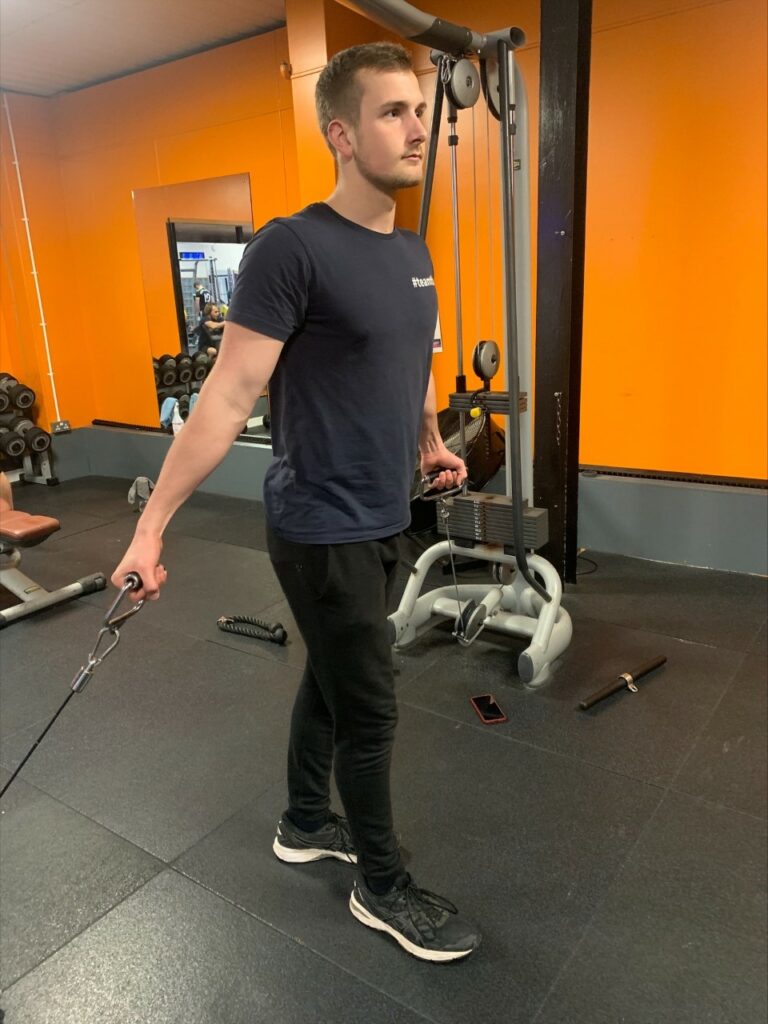
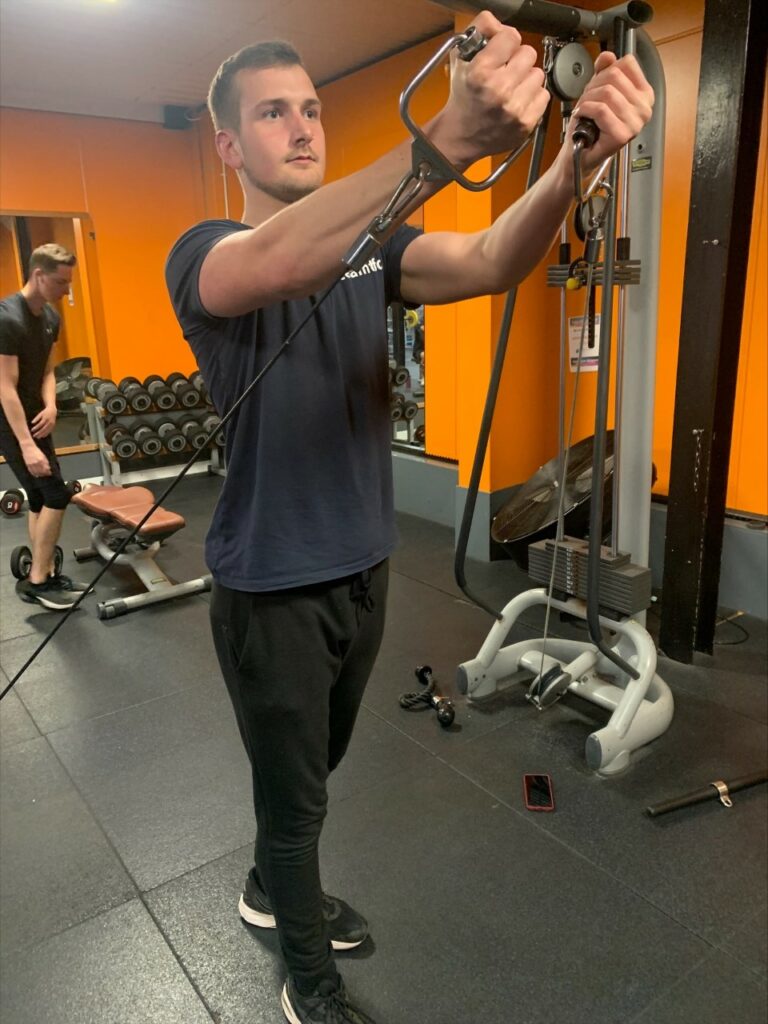
Lying cable fly –
Setting up the same as a low cable fly, with D-grips going to the bottom of the cross-over, set up a flat bench in the centre of the crossover, and pulling shoulders back as you lie down, with your chest being in line with the handles.
Keeping elbows slightly bent, let the weight pulldown, and stretch your chest, then following the hugging motion all the way to the top and squeezing your chest for 2 seconds, then controlling the eccentric all the way down until fully stretched, and repeat for desired reps.
This movement takes away core involvement, and if set-up correctly can have more activation than a standing cable fly on your chest.
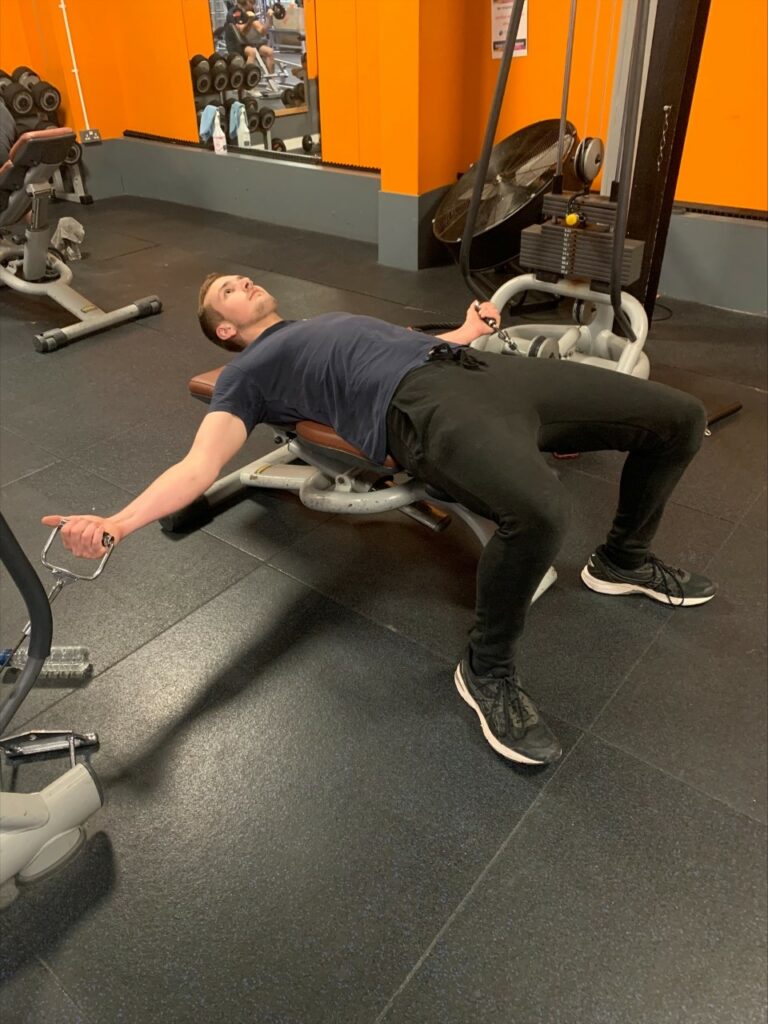

Lying incline cable fly –
Setting up exactly as above but setting bench at a 15–30-degree incline, pulling shoulders back and down is especially important to reduce the shoulders taking over.
Keeping palms neutral, really focus on the stretch of the chest at the bottom of the movement and the squeeze in the upper chest at the top, holding for 2 seconds and focusing on control to get the most out of the exercise.
This movement focuses heavily on upper chest and is one of the best for definition of the chest. However, it is the easiest for shoulders to takeover if done incorrectly.
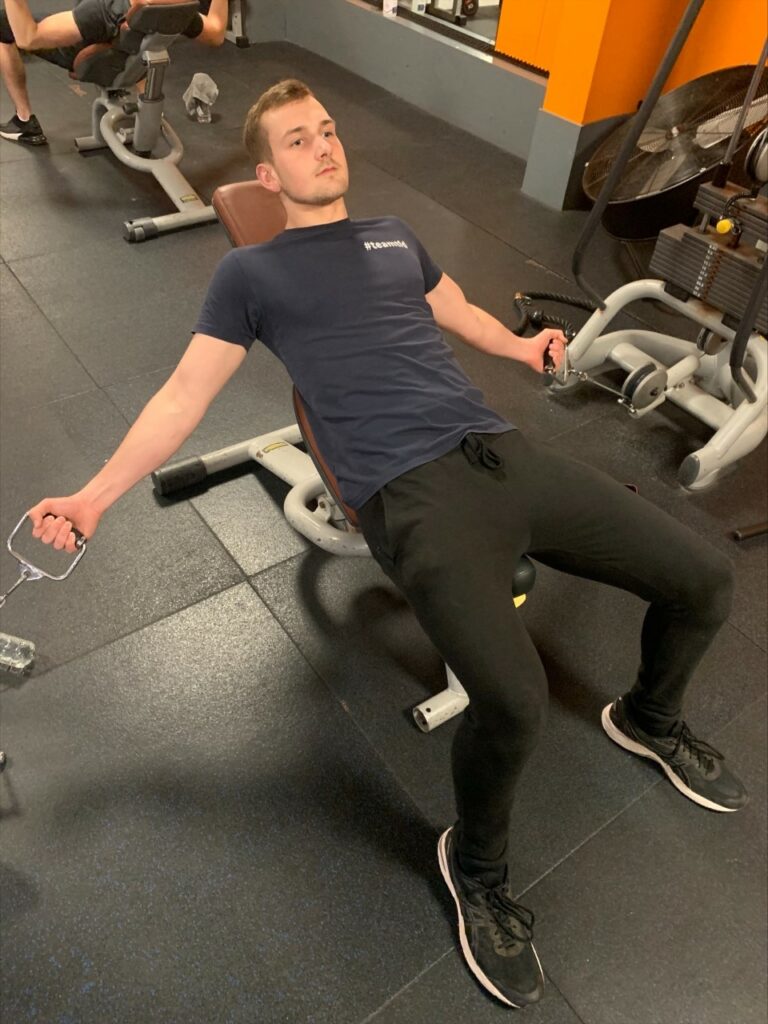
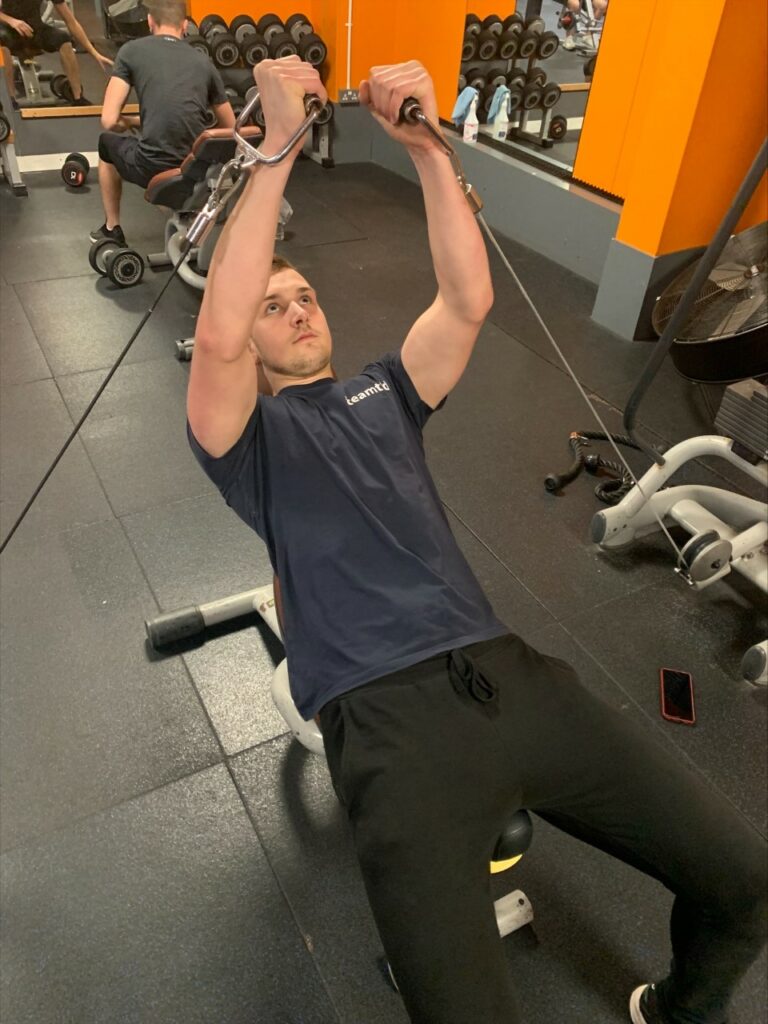
To check your technique or help get the most out of the chest fly in your programme ask for a consultation at reception as part of your gym membership!

